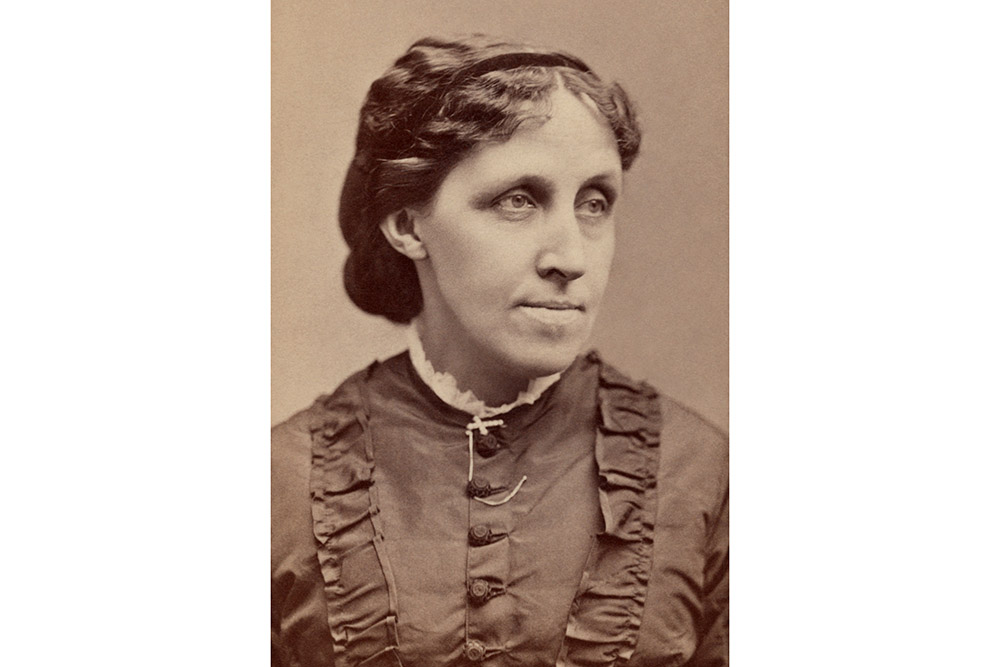Flashback Friday - Louisa May Alcott, Nurse

First published at age 19, and friends with luminaries from Frederick Douglass to Henry David Thoreau, Louisa May Alcott is perhaps best known for her best-selling book LITTLE WOMEN. She is perhaps least known, however, for being a nurse.
Though her caregiving lasted just six weeks while she was stationed as a Union nurse in Washington, D.C., Alcott's later writing was heavily influenced by her nursing experiences, writes second-year nursing student Emily Williams, whose paper on Alcott was among those celebrated by the National Student Nurses’ Association and the American Association for the History of Nursing. Williams asserts that Alcott’s contributions to nursing are significant not because of the depth of her nursing knowledge but because of the light she shed on the profession through her lively, witty, sometimes tragic stories.
"It is critical that Alcott's nursing history be brought to light," says Williams, as a "tremendous source of empowerment for all who value dedication and compassion."
Alcott was born in Concord, Mass., in 1831 into a large, often ill family that struggled with poverty. Wishing both to help and seek adventure during the early years of the Civil War, but without any formal training (though she’d read instructional texts inspired by Florence Nightingale), Alcott traveled from Boston to Washington, D.C. to “first live, then write.”
She arrived just after the battle of Fredericksburg, and thus began working 12-hour days washing, feeding, dispensing medicine, and tending the wounds of these “wrecks of humanity … riddled with shot and shell, so torn and shattered … borne suffering for which we have no name” (Alcott, 45). Alcott saw men with limbs blasted off, some with parts of their faces missing, one shot through the stomach and lungs, and many missing one or both legs. When she could, she “ministered to their minds,” chatting and joking with soldiers, holding their heads and hands, writing letters for them to send home, answering questions, reading, keeping their money and valuables, even singing lullabies to them.
The resulting work, HOSPITAL SKETCHES, originally published in a newspaper in 1863, was an immediate hit with the public, and Alcott's descriptions absorbed her readers and offered the public a "way to understand the many competencies and functions of nurses," explained Williams. These sketches, added Williams, shaped "public opinion of nursing for the better by highlighting the … dedication and compassion of Civil War nurses and allowed the profession to continue to grow as a legitimate occupation for women."
Though often grisly and at turns tragic, HOSPITAL SKETCHES was not without lighthearted moments. Referring to herself as “Nurse Periwinkle,” Alcott found both humor and connection with the soldiers, who asked her forgiveness as she helped wash off the stink and blood of war. There was even the suggestion of romance, as Alcott seemed to fall in love with a 30-year-old Virginia blacksmith named John whose injuries later claimed his life.
Alcott’s work, said Williams, showed the "intricacies of the nursing profession and its approach to care as involving the mind, body, and environment, and offered greater visibility to the issue of sanitation and inter professional relationships."
Alcott’s nursing didn’t, however, last long. After just 6 weeks of service, Alcott caught typhoid fever and pneumonia, and was hospitalized, and later sent home. At that time, the standard remedy involved ingesting a toxic mercury compound called calomel, a “therapy” that caused her to suffer symptoms of mercury poisoning, including hallucinations and chronic vertigo, for the final two decades of her life. For relief, she took opium. She died in 1888 at 55 years old, 132 years ago this coming fall.
The six weeks of her service left an indelible impression, however. Wrote Alcott in 1863, “All that is best and bravest in the hearts of men and women, comes out in scenes like these; and, though a hospital is a rough school, its lessons are both stern and salutary; and the humblest of pupils there, in proportion to his faithfulness, learns a deeper faith in God and in himself.
“I, for one, would return tomorrow.”
And incredible read brought to light by @UVA Nursing’s own Emily Williams. #FlashbackFriday thanks her – and Ms. Alcott herself – for shining this light.
###
#FlashbackFriday is brought to you by the Bjoring Center for Nursing Historical Inquiry, with special thanks this week to second year @UVA student Emily Williams for sharing her insights in her paper “Exploring Louisa May Alcott’s Hidden Contributions to Nursing,” which won a second place prize in the 2020 NSNA/AAHN essay contest, announced April 28.
READ Alcott's 1863 HOSPITAL SKETCHES:
http://digital.library.upenn.edu/…/a…/sketches/sketches.html
